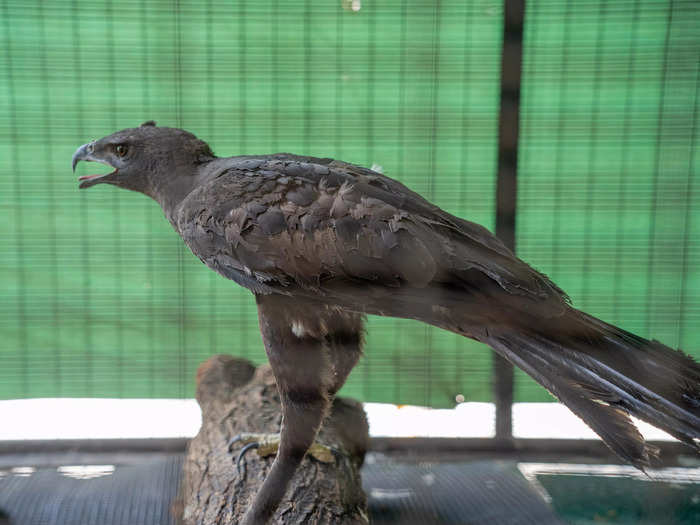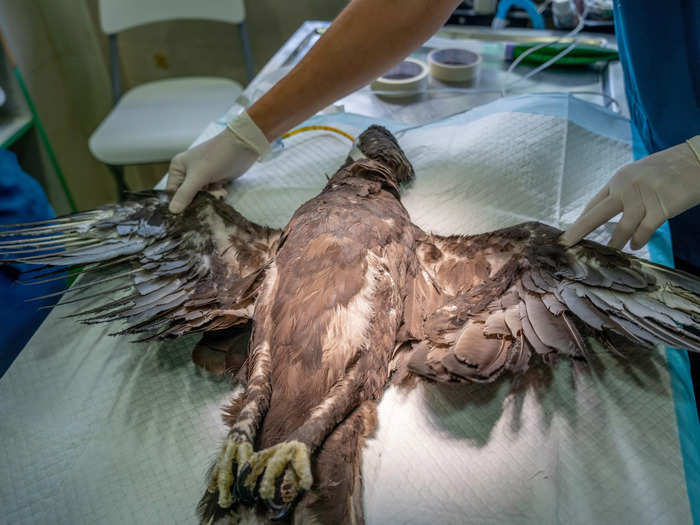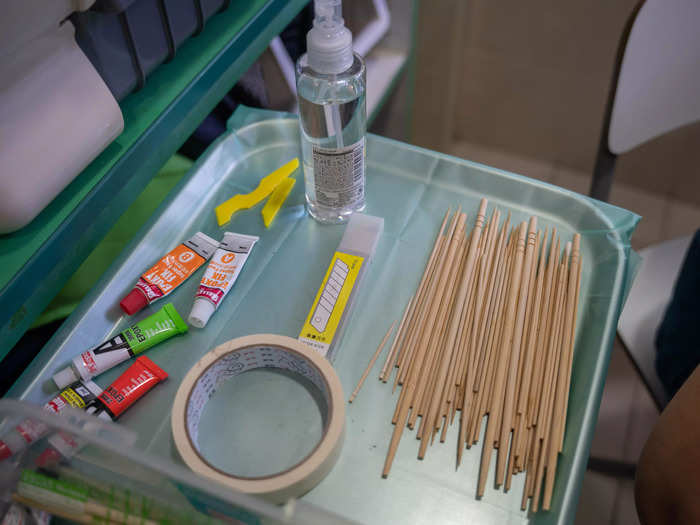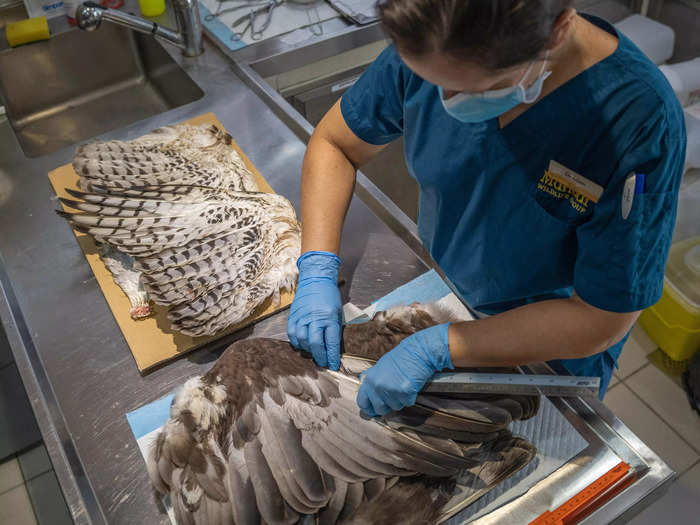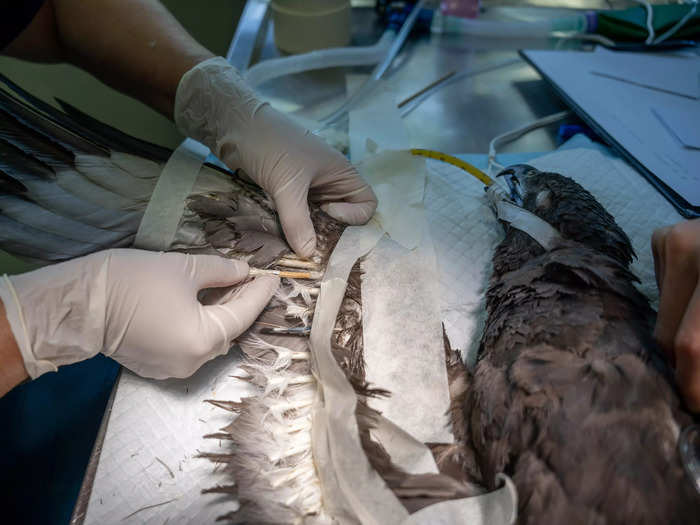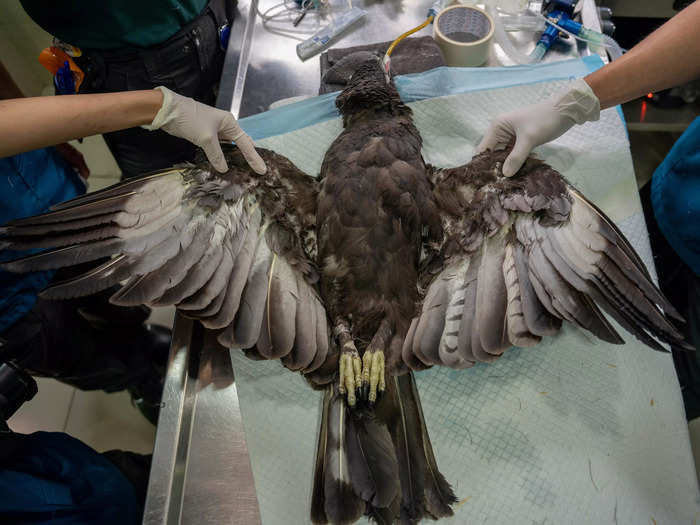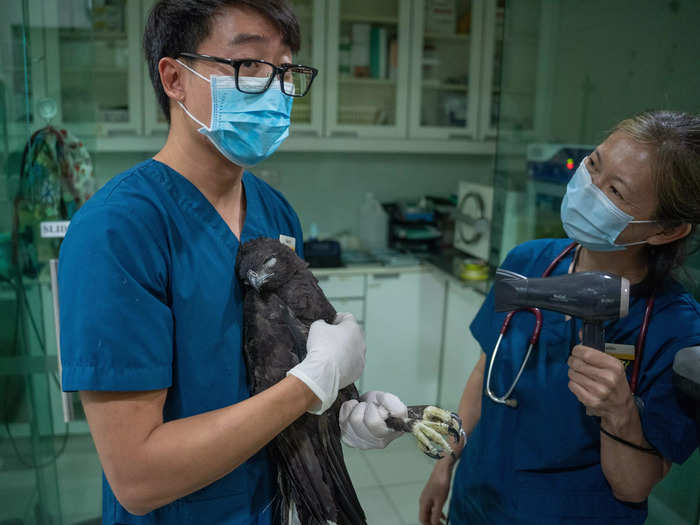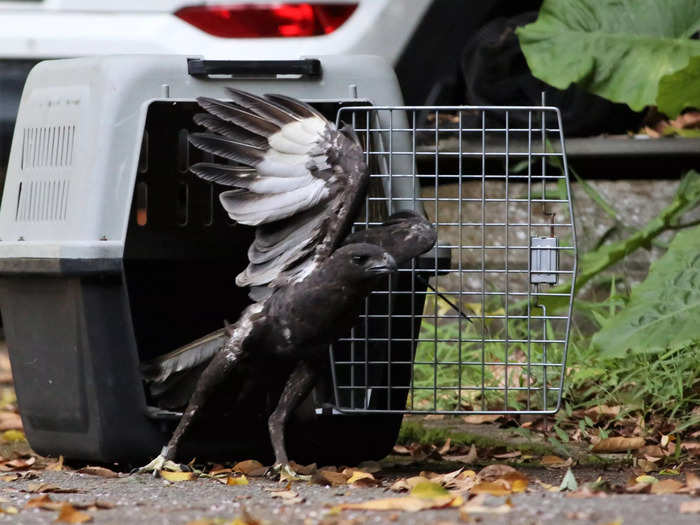The rescued raptor was released into the wild on January 21.Jurong Bird Park
- A changeable hawk-eagle was found with burned feathers on Singapore's Jurong Island.
- Vets used a centuries-old process called 'imping' to replace the damaged feathers.
An injured changeable hawk-eagle discovered in Singapore was able to take flight again after a veterinary team repaired its wings — using supplementary feathers and bamboo chopsticks.
According to a news release, vets at the country's Jurong Bird Park performed a procedure to replace over 50 feathers on the bird's wings and tail.
Changeable hawk-eagles are a bird of prey and the largest raptor species in Singapore. They get their name from the way their feathers morph from pale to light, according to ebird, a birdwatching organization run by the Cornell Lab of Ornithology.
The species is typically found in Southeast Asia and India; according to the Nature Society of Singapore, there are 12 currently living on the island.
Here are nine photos that show the remarkable transformation the hawk-eagle underwent in order to fly again.
The hawk-eagle was found with burned feathers and taken in by Singapore's Jurong Bird Park on January 8.
The changeable hawk-eagle that was taken in by Singapore's Jurong Bird Park on January 8. It was found with burned wing and tail feathers. Jurong Bird Park
Bird park veterinarians said the animal had burned feathers on its wings and tail, which left it unable to fly.
Officials told Insider they weren't able to determine the cause of the bird's injuries.
To repair its broken wings, vets used a technique called imping.
The changeable eagle-hawk that was rescued by Singapore's parks authority. Jurong Bird Park
"Imping" is a centuries-old practice that involves connecting the remains of a bird's old or damaged feathers to new replacement feathers.
Although birds naturally regrow their feathers as part of the molting cycle, the process can sometimes take up to a year for feathers to be fully restored.
Instead, the avian hospital team used replacement feathers recovered from other birds of the same species to help speed up its recovery.
Bamboo chopsticks and epoxy were used to affix around 50 new feathers to the hawk-eagle.
Bamboo chopsticks and epoxy were among the tools used to perform the imping process. Jurong Bird Park
Bamboo sticks or similar material is used to connect old and new feathers together. They're then secured together with a non-toxic epoxy.
Here, a vet measures the feathers on a pair of donor wings to decide whether to use them on the hawk.
A veterinarian measures the feathers on a pair of donated wings to assess if they are suitable for the imping procedure Jurong Bird Park
Vets used replacement feathers taken from the wings of other rescued birds of the same species that had previously been cared for by the bird park but died of their injuries or from disease.
The bird was kept under anesthesia while undergoing the hours-long procedure.
A veterinarian tests the fit of one of the donor feathers on the injured bird. Jurong Bird park
Imping is a painstaking and methodical process — but it thankfully doesn't hurt the animals.
That's because feathers are made of keratin — just like human hair and nails — and are fairly pliable.
The team replaced around 50 of the bird's feathers.
The replacement feathers seen on the rescued bird after the imping procedure. Jurong Bird Park
Changeable eagle-hawks come in two different color variations, and while the imping process left this bird looking slightly different, its ability to fly wasn't impacted.
As finishing up the procedure, technicians attached a tracking device to the bird.
A tracking device was also attached to the bird before its release Jurong Bird Park
A satellite-based tracking device monitored the bird's behavior and flight path.
Following the procedure, nurses kept the bird warm as it recovered from anesthesia.
A nurse turns a hairdryer toward the bird to warm it up. Jurong Bird Park
Beyond aiding in flight, a bird's feathers also assist in regulating its body temperature; act as camouflage; and protect it from water, according to Dr. Ellen Rasidi, a veterinarian with Jurong Bird Park.
"Without sufficient feather coverage, the bird would not have been safe to be released into the wild, despite its otherwise good health," she said.
The changeable hawk-eagle — its plumage now replenished with dozens of new feathers — was released back into the wild on January 21.
The rescued raptor moments after being released from its carrier. Jurong Bird Park
The day after the procedure, the bird was released back into the wild, and according to its tracking device, has flown around six miles from the release site.

